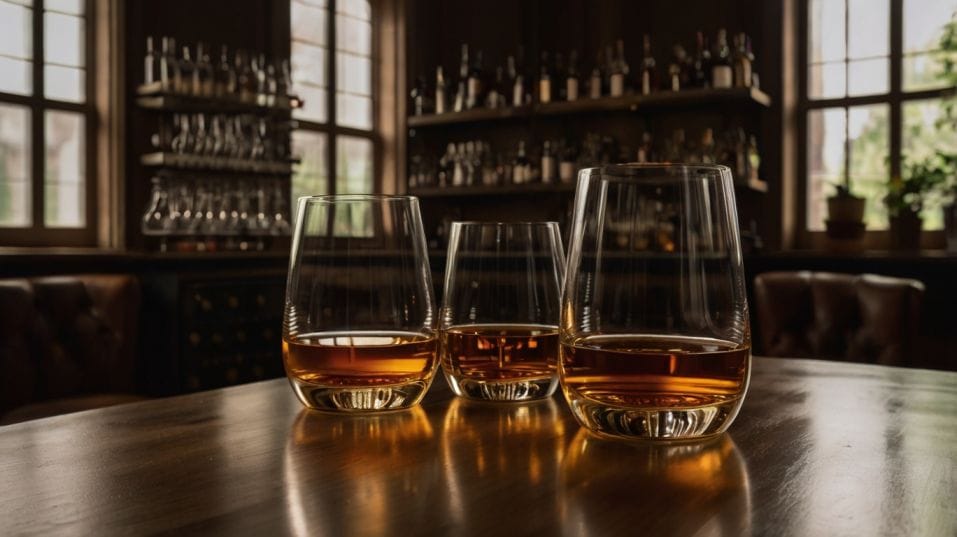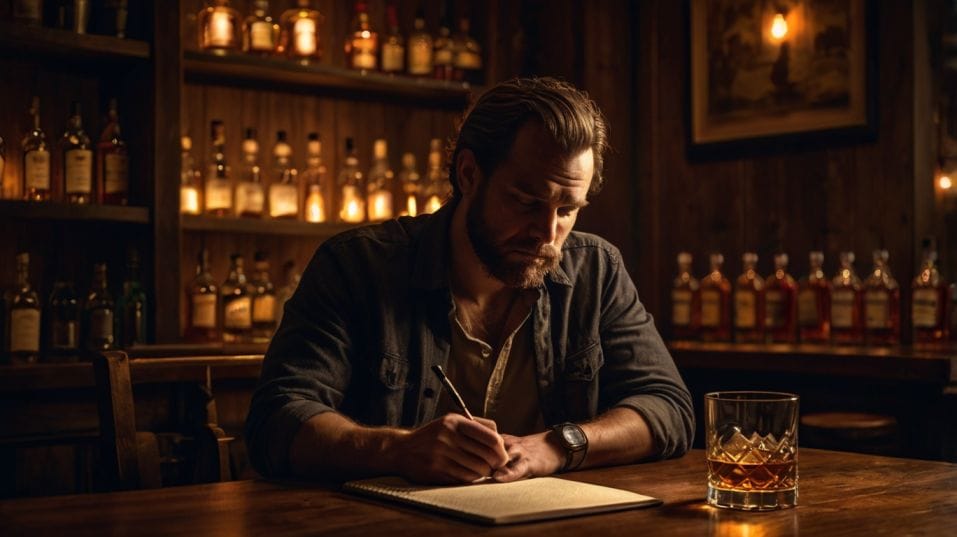How to Describe a Whiskey Without Sounding Pretentious
Learn how to describe whiskey without sounding fake. Build your palate, taste with confidence, and talk whiskey like a real drinker—not a script.

Ever tasted a whiskey and had no clue how to describe it—without sounding like you swallowed a thesaurus? If you're just starting out, you're not alone.
The good news? You don’t need fancy words or a perfect palate to sound sharp. You just need a framework, a few solid tricks, and the confidence to say what you really taste.
This guide will show you how to talk whiskey like you actually drink it—not perform it.
Start With the Structure—Not the Fluff
Most people start tasting whiskey backward. They jump into obscure notes—“brûléed fig,” “ancient oak,” “a breeze of sea salt”—before they’ve locked in the basics.
The result? You lose people, and worse, you lose your own grip on what the whiskey is actually doing.
Step back. Focus on structure first. Every whiskey moves across your palate in phases: the entry (first impression), the mid-palate (flavor shift), and the finish (what lingers). Think of it like a sentence with a beginning, middle, and end.
Is the start sweet? Is there a spike of spice or bitterness in the middle? Does the finish fade quickly or keep going?
Even if you don’t know the names of the flavors yet, you can track their movement. That’s the foundation. Without it, all your tasting notes are noise.

Use Straightforward Language That Actually Lands
You don’t need exotic fruit analogies to talk whiskey. Most great tasters use plain, vivid language: cinnamon, burnt sugar, clove, vanilla, fresh oak, tobacco.
These are sensory anchors. They're specific without being niche. They work because most people know what they smell and taste like.
You’re not trying to impress someone with rare vocabulary. You're trying to communicate what’s really in the glass.
If you say, “it tastes like cherry cough syrup with a spicy oak finish,” that paints a much clearer picture than “dark stone fruit layered over toasted wood tannins.”
The first one sounds like you tasted something. The second sounds like you read it. Real talk wins every time.
Get Your Nose Involved—That’s Where Half the Flavor Is
If you're skipping the nose, you're skipping the story. Smell is where whiskey shows its intent. Before you take a sip, get your nose in the glass.
Breathe in gently with your mouth slightly open. That helps you pick up more aroma and keeps you from frying your senses with high-proof alcohol.
What to Look for
What do you notice right away? Sweet notes hit early: caramel, honey, fruit, vanilla. Spices and smoke tend to show up next. Then, the deeper layers—leather, wood, herbs, earth—start to creep in.
You don’t have to name everything. Start by grouping things: sweet, spicy, earthy, smoky, fruity. That alone gives you more vocabulary than most casual drinkers ever bother to develop.
Your Palate is a Muscle—Train It Like One
If you're new to tasting, don’t expect to pick out 12 flavor notes in one pour. You’re not broken—you’re just untrained.
The more you taste, the more reference points your brain builds. It's like learning a new language. At first, you only hear noise. But as your ear sharpens, you start to pick out meaning.
How to Practice
To speed that up, taste with intention. When you sip, let it roll across your tongue. Focus on how it feels—not just what it tastes like. Is it oily or dry?
Does the flavor expand or stay narrow? Does the finish linger or vanish? The more you notice, the more you can describe.
Keep a notebook. Write what you actually taste, even if it's weird or specific. “Tastes like warm banana bread with clove and a hint of charcoal” is better than silence. And over time, your language sharpens—because your palate does.
Avoid the Echo Chamber—Taste Before You Read
A common beginner mistake? Reading tasting notes before trying the whiskey.
Now you’ve got someone else’s words in your head—and you’re hunting for flavors you might never have found on your own. That’s how you end up bluffing your way through a pour.
Try This Instead
Try this instead: pour the whiskey, nose it, taste it, take notes. Only after you’ve built your own take should you see what others said.
It’s a great way to calibrate. Sometimes you'll match up. Other times, you'll be way off. That’s where the learning happens.
There’s no prize for guessing right. There’s only value in becoming a better, more honest taster.
Understand Where the Flavor Comes From
You don’t need to be a chemist, but it helps to know why whiskey tastes the way it does. Here’s the crash course:
Key Flavor Drivers
- Grain matters. Corn makes things sweeter and rounder (bourbon). Rye brings spice and sharpness. Barley leans malty or nutty (Scotch, Irish).
- The barrel matters more. American oak brings vanilla, caramel, and toast. European oak gives darker spice, dryness, sometimes bitterness. Time in the barrel adds complexity—but too much can flatten it.
- Proof changes everything. Higher proof often brings more intensity and heat—but also more flavor. Add a few drops of water and the whiskey may open up in new ways.
Knowing this gives you context. It helps you explain what you’re tasting without sounding like you’re just guessing.
Skip the Script. Start a Conversation.
Describing whiskey isn’t a performance—it’s a conversation. Whether you’re at a bar, a bottle share, or just drinking with a friend, the goal is to connect over flavor. So ask questions. Share impressions. Compare notes.
Keep It Real
Saying, “This reminds me of toasted marshmallows with a bit of barrel char” invites someone in. Saying, “This has prominent vanillin and lactone characteristics” pushes them out.
You don’t need a script. You need a real take. The best tasters talk like people, not textbooks.
Final Thoughts
Describing whiskey well isn’t about vocabulary—it’s about vision. You’re learning to translate flavor into language that actually means something.
Skip the jargon. Trust your palate. Build your sensory memory. Stay honest. Say what’s in the glass, not what you think you’re supposed to say.
And here’s your move: Tonight, pick a whiskey you’ve had before, and describe it like it’s your first time. Forget the label. Forget what anyone else said.
Smell it. Sip it. Feel it move. Then say out loud—just for yourself—what it really tastes like. That’s how real whiskey knowledge is built: one honest pour at a time.




